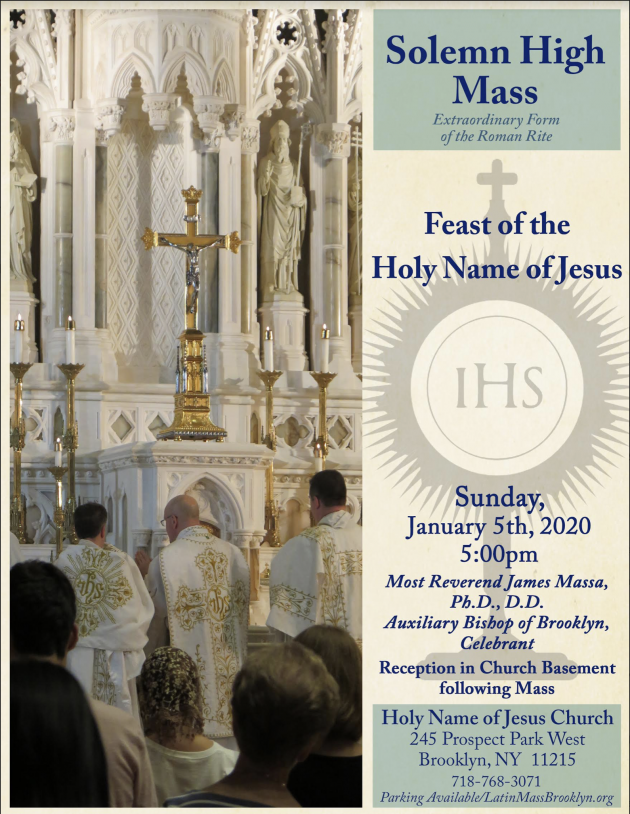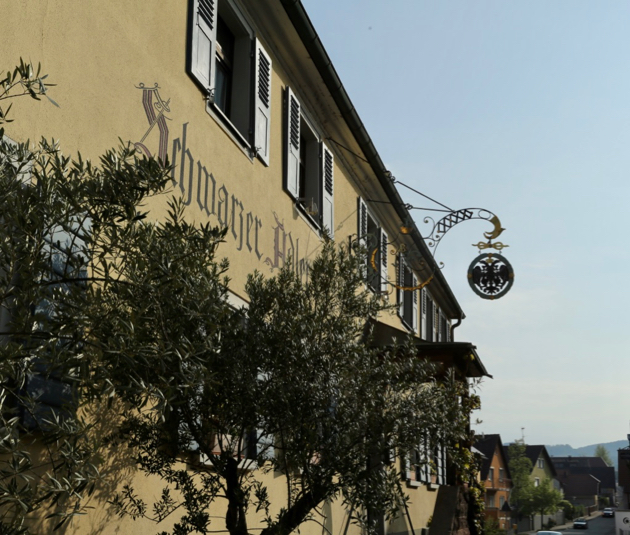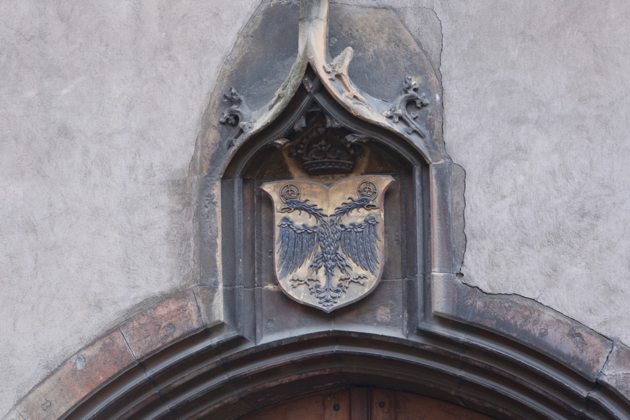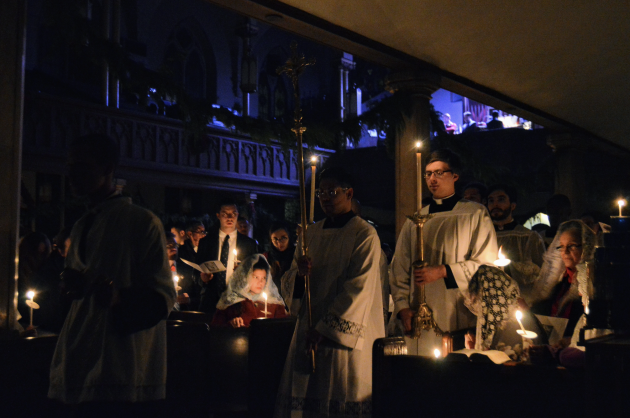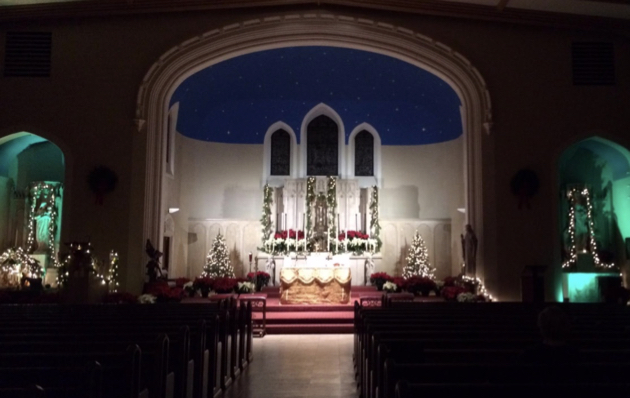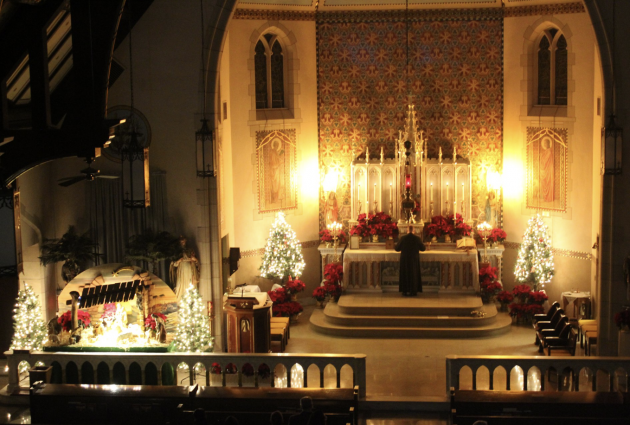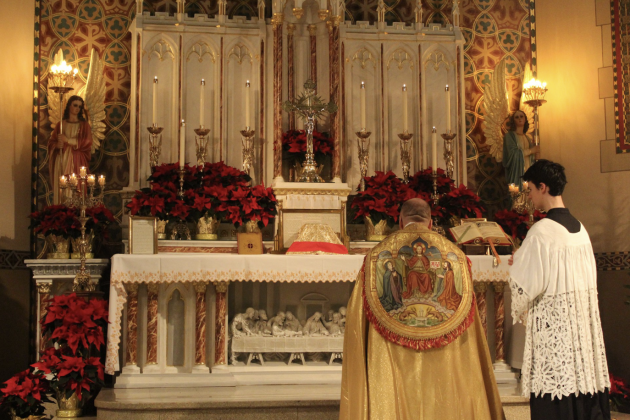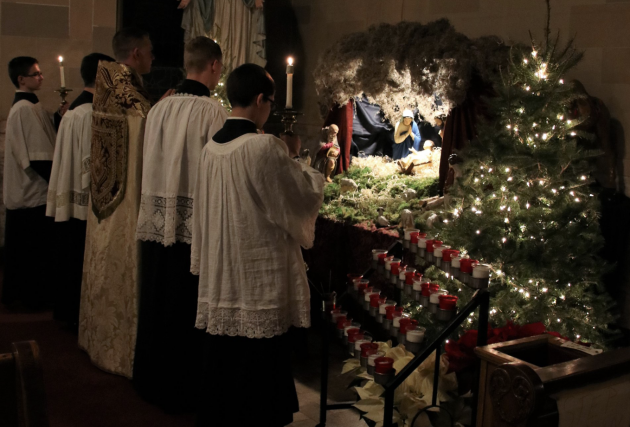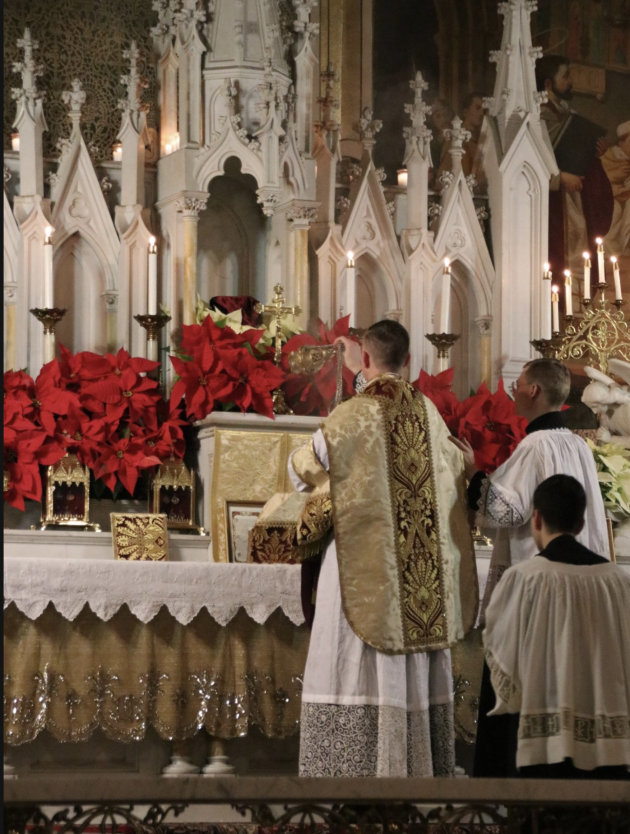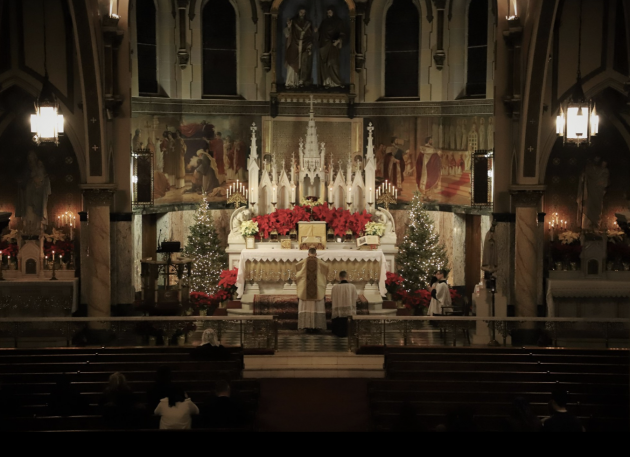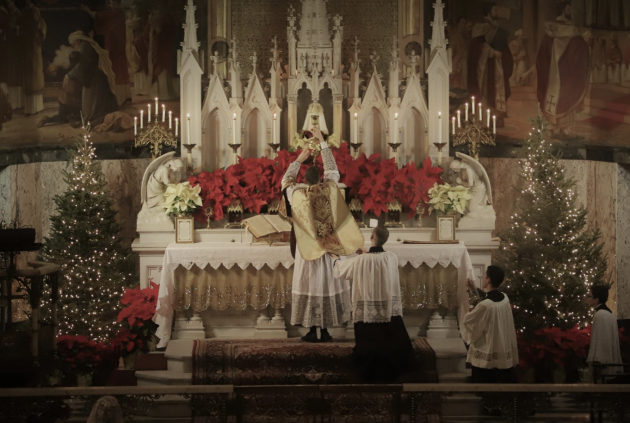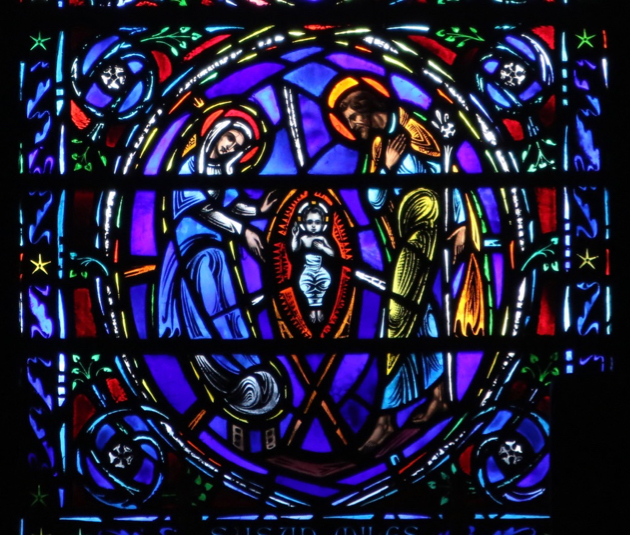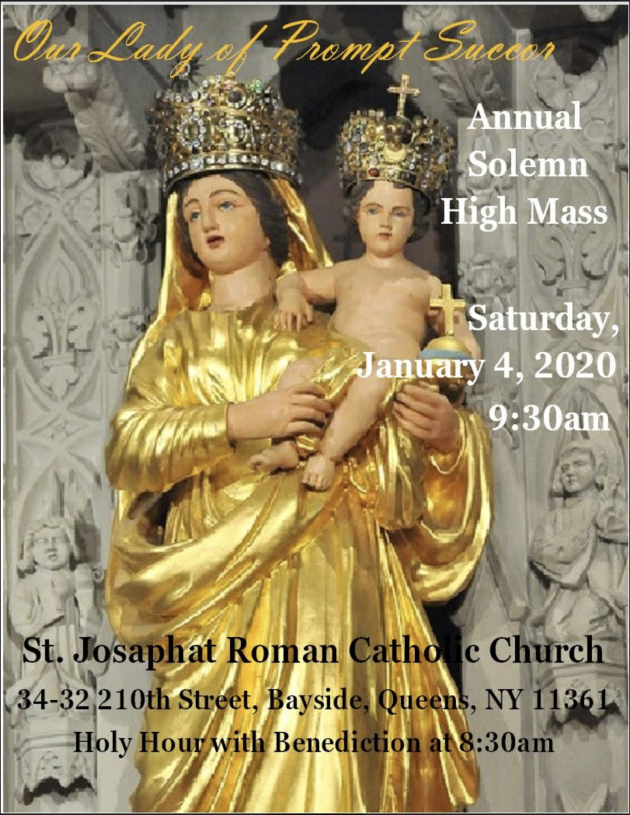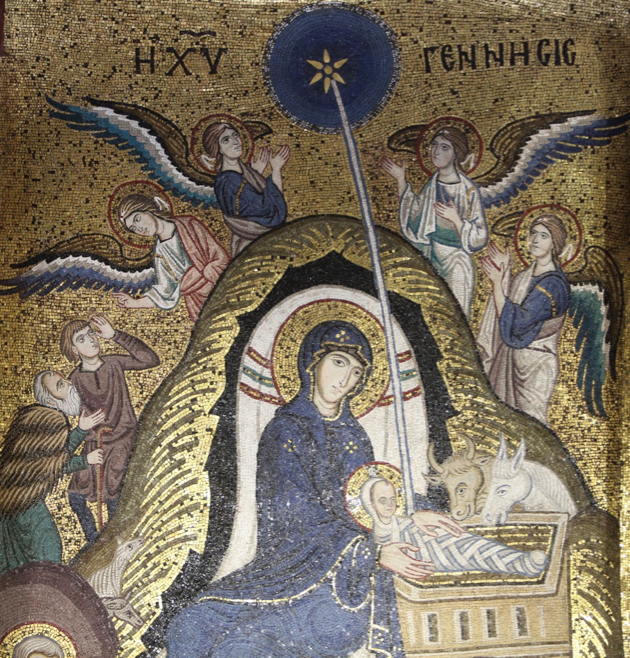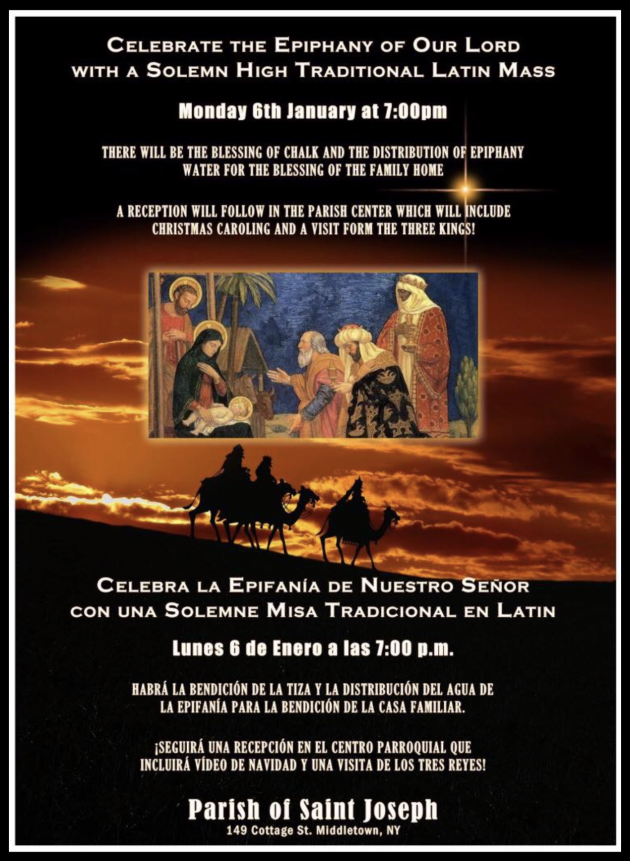30
Dec
The Holy Roman Empire
Posted by Stuart ChessmanThe double-headed eagle of the Holy Roman Empire adorns a well-known restaurant in the Kaiserstuhl area of Baden, Germany: up to 1806 part of the Holy Roman Empire (and Austria)
The Holy Roman Empire: A Short History
By Barbara Stollberg-Rilinger
Translated by Yair Mintzker
Princeton University Press
Princeton, 2018
Some years ago, I attended a conference of lawyers in Salzburg. I was walking through the streets of that magical city with a professor from an American law school, who marveled at the great architecture surrounding us. I informed him there was a reason for this: Salzburg in the past had been not a provincial Austrian city. but the capital of a substantial principality of the Holy Roman Empire. That fascinated him: “the Holy Roman Empire…. the Holy Roman Empire….” he kept saying to himself as we continued our walk.
Yes, it is a mysterious entity, this Holy Roman Empire, which existed in one form or another between 800/962 and 1806. Throughout most of this time it was closely linked with Germany- only for a period in the 13th century did the center of gravity shift to Italy.
Barbara Stollberg-Rilinger has written, as the title indicates, a “short history” of the Holy Roman Empire – actually only of its last three centuries. 1) It covers the period ca. 1490 to 1806 – when the Empire had been “repurposed” as a German national kingdom. But this transformation was never complete. Central Europe never become another France or United Kingdom. This history it is more a constitutional or structural history – Prof. Stollberg-Rilinger emphasizes less what the Empire actually did.
But these last three centuries of the Empire, even if a period of weakness compared to the Empire‘s medieval golden years, was still an era of real political accomplishments. The Holy Roman Empire was directly involved in all the major events of Europe; its diffuse structure enabled the Protestant Reformation to take root. But, paradoxically, this same lack of unity enabled Catholicism to survive in Germany – especially in the imperial or Austrian lands that had remained Catholic. From roughly 1480 to 1720 the Empire led the defense of the West against the Ottoman Turks, a struggle in which the German lands – not Poland – did the overwhelming share of the fighting. These wars culminated in the recovery of all of Hungary for Christendom.
The Empire’s political complexity and religious antagonisms led to the catastrophe of the Thirty Years War. Yet from the low point of 1648 – the end of that struggle – the Empire recovered to lead the defense against France in the West, Sweden in the North and the Ottoman Turks in the East. By 1718 German princes occupied the thrones of Great Britain, Hungary and Poland. Denmark had become essentially a German state, and Sweden had its German possessions reduced to a fraction of their former size. It was a remarkable restoration! But soon thereafter came the conflict between Prussia and Austria, each of which disposed of resources dwarfing those of the Empire of which they were largely a part. Finally, the Empire collapsed under the blows of the French revolutionary armies and of Napoleon.
The Empire’s legacy in art, culture and architecture is overwhelming. “Take Germany’s best years(1660-1760)” as Ezra Pound put it. Why is Prague today such an incomparable gem?- not because it is the capital of a third-rate Central European state, but because it served on several occasions as the de facto capital of the Holy Roman Empire. The same, of course, can be said of Vienna – only here the legacy of the Empire in obscured by 19th century construction. Beyond the imperial capitals, there are the architectural masterpieces of all the bewildering variety of the former estates of the Empire: the imperial abbeys ( e.g., Ottobeuren); the imperial cities (Rothenburg and Regensburg); and the prince-bishoprics (Bamberg and the above-mentioned Salzburg). And the achievements of these last imperial ages were not confined to architecture and the visual arts but embraced music, philosophy and, especially towards the end of this era, literature.
The study of the Holy Roman Empire takes on added significance in the light of the recent “Catholic Integralism” discussion. For the “Holy” Roman Empire is by definition characterized by a union of the temporal and the sacred. It is a Catholic Empire. This did not necessarily earn it the approbation of 19th century and later ultramontanes. For the Empire was anything but a passive tool in the hands of the papacy. For example, in the period covered by Prof. Stollberg-Rilinger, Emperor Charles V, after sacking Rome in 1527, was instrumental in convening the Council of Trent against significant opposition in the Vatican. The Council assembled in Trent, a city, although not German-speaking, of the Empire. This religious dimension of the Empire, in my view, does not receive a totally adequate treatment in this book.
Although brief, this book may be relatively challenging for the American reader. It seems to presuppose a fairly good knowledge of German and Central European history, culture and geography – even if it does explain where Silesia is located or who Goethe is (presumably these are additions by the translator). With that reservation, The Holy Roman Empire: a Short History is a useful handbook enabling the reader to put in the proper political framework what are otherwise apparently unconnected religious, artistic and cultural developments. So, I notice it is offered for sale at the current exhibition Maximilian: the Last Knight at the Metropolitan Museum.
Regrettably the two forewords to this book are typical of present-day academia in Germany and the United States. Prof. Stollberg-Rilinger worries that the methodology of her book could be interpreted as a “political move,” which is understandable given that her own foreword is largely devoted to the discussion of post–19th century ideological issues. Then there is the foreword of the translator. Yair Mintzker describes the book as targeting a “broad audience” then devotes paragraphs to an exposition of the interrelationships among academics currently working in the field of the Holy Roman Empire. Having translated a book often concerned with details of terminology, he refers to the “Austrian Empress Maria Theresa.” And of course, like every American professor, he must utilize a discussion of the most remote topic to launch an attack on Trump. “Almost all Americans ” he informs us, “accept as legitimate the election of Donald J. Trump.” How gracious of them to accept incontrovertible facts! You see, this was the product of of a series of “fictions” that the outcome of elections represents the will of the people. Prof. Mintzker’s understanding of the purpose and workings of the United States constitution is decidedly limited.
But these things are of our time. I would hope the reader of The Holy Roman Empire: A Short History would be inspired by it to delve more deeply into a fascinating polity and its culture!
- The original German title more accurately conveys the scope of the book: The Holy Roman Empire of the German Nation: from the End of the Middle Ages to 1806.
The imperial eagle in Colmar, Alsace (up to 1635 part of the Empire)
29
Dec
Midnight Mass at Holy Innocents Church, Manhattan. Photos courtesy of Arrys Ortanez.
Our Lady of Refuge Church, Bronx, NY. Photos courtesy of Joanne O’Beirne
Midnight Mass at St. Josaphat Church, Bayside, NY. Photos courtesy of Julie Collorafi.
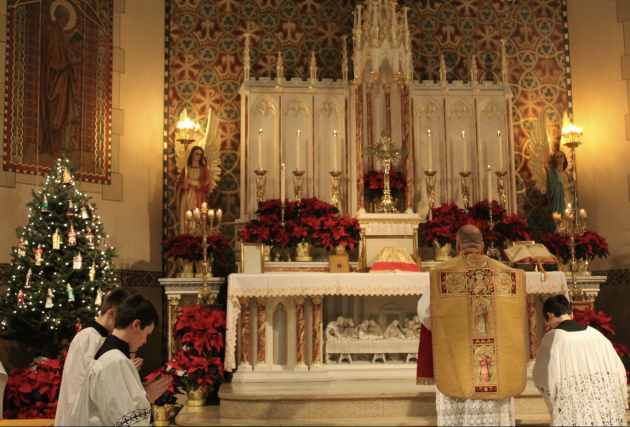
Christmas Day Mass at Our Lady of Mount Carmel, New York. Father Christopher Salvatori, celebrant.
Midnight Mass at Sts. Cyril and Methodius Oratory, Bridgeport, CT. Photos from Sts. Cyril and Methodius Facebook page.
Christmas Day Mass at St.Patrick’s Church, Newburgh, NY. Photo from AdaltareDei Facebook page.
By Father Richard Gennaro Cipolla
Just when one thinks that one has read all of the mindless and harmful stuff that Catholic clergy have written or spoken, that assumption is shattered, this time by a truly offensive homily given by Father Michael Mullaney, the President of Saint Patrick’s College, Maynooth, Ireland, a section of which homily was published on Rorate Caeli a short while ago.
The homily was preached at the annual Christmas Carol Service at Maynooth, in the presence, we may suppose, of other clergy, seminarians and laity. The topic of the homily is the sin of racism in contemporary Western society. That racism is a sin according to Catholic teaching there is no doubt. The Catholic Catechism is quite clear on this:
The equality of men rests essentially on their dignity as persons and the rights that flow from it. “Every from of social or cultural discrimination in fundamental personal rights of the grounds of sex, race, color, social conditions, language, or religion must be curbed and eradicated as incompatible with God’s design.”(CCC no. 1935)
There are many statements in Church documents of all types that confirm the sinfulness of racism. Would that Father Mullaney used one of these texts as the foundation for his homily. Instead he uses the story in the Gospel of St. Mark about Jesus’ encounter with the Syro-Phoenician woman who wanted him to cure her daughter who was very sick. The following is Father Mullaney’s use of this encounter as an example of how everyone can commit the sin of racism.
Even Jesus had to confront his ingrained prejudices; indeed, even racism. The Gospels recount his stunning and unique encounter with a Syro-Phoenician woman desperately seeking a cure for her sick daughter. The disciples dismiss her as she was considered racially inferior. Surprisingly, Jesus sharply rejects her appeal. His mission is to the Jews only; his tribe; the children of God. When the woman insists, Jesus dismisses her again– calling her shockingly a ‘dog’ – a racial slur. The woman doesn’t challenge his insult. Like so many victims in history, she has internalized her inferiority. But her repartee: “Even the dogs under the table eat the children’s crumbs” is the only recorded encounter that left Jesus speechless. If we truly celebrate the mystery of the Incarnation, of God who takes human flesh, it should not surprise us that Jesus could not have avoided the effects of the prejudices that had shaped his human and cultural identity from childhood.
We do not know what Jesus thought in that moment. But the Syro-Phoenician woman dislocates Jesus from his narrow tribal suppositions and prejudices about the ‘other’ represented by her. She ceases to be an ‘outsider’. God’s heart could not be closed to her. She too is one of the children of God. Physical healing is given not only to her daughter but ultimately the deeper wounds of isolation, marginalization and discrimination become central to Jesus’ healing and liberating ministry in the Gospel. In this transformative encounter Jesus demonstrates that regardless of how unwittingly and unknowingly we are part of the problem, we can choose to reject racism and hostility to the ‘other’, the stranger, in ourselves and in our world, committing ourselves to the slow, hard work of transformation.
The whole passage is so wrong-headed that one hardly knows where to begin to react to these words in a homily delivered by a priest who is helping to train seminarians to become good priests. Let us begin with the observation that Father Mullaney believes that in this encounter between Jesus and the woman that Jesus is acting like a racist, that is, his comments to her are racist. If this be true, then Jesus is sinning against this woman. It is obvious that this contradicts the dogma of the sinlessness of Jesus, “he who knew no sin” (2 Cor. 5:21), which is an integral part of the Church’s understanding of the Incarnation itself. But Father Mullaney has his own understanding of the Incarnation: “if we truly celebrate the mystery of the Incarnation, of God who takes human flesh, it should not surprise us that Jesus could not have avoided the effects of the prejudices that had shaped his human an cultural identity from childhood.” Does this imply that he learned these prejudices that are racist from his mother and father? Did his mother, the Virgin Mary, gratia plena, whose sinlessness is also a part of Church teaching, teach him to be a racist and consider people other than Jews “dogs”? If Father Mullaney believes this, he should read up on the heretical kenotic doctrines of liberal Protestantism that have been condemned many times by the Church. More fundamentally, he should also read up on the context of this passage in the Gospel of St. Mark.
Father Mullaney begins the next paragraph of the sermon with this statement:
“We do not know what Jesus thought in that moment” Thanks be to God for the preacher’s admission that he could not see into the mind of Jesus at the moment! But he has already claimed to know that Jesus harbored racist attitudes towards this woman. And in the next sentences he credits the woman with “dislocating Jesus from his narrow tribal suppositions and prejudices about the ‘other’ represented by her.” In this way, by her persistence the woman pricks Jesus conscience, and he feels guilty, and from that feeling of guilt is converted from his racist attitudes to a more enlightened moral understanding. This event marks a “conversion experience” for the man Jesus.
Is this the same Jesus who recounted the parable of the Good Samaritan? Is this the Jesus who reprimands Peter for cutting off the Roman soldier’s ear, this man the symbol of Roman oppression of the Jews? Is this the Jesus who speaks to the Samaritan woman at the well and brings her to faith? Is this the Jesus who said: “The Second (Commandment) is this: Love your neighbor as yourself.”? Is this the Jesus who gave the Great Commission to the Apostles to “go and make disciples of allnations”? And finally: Is this the Jesus who died on the Cross not only for his own people, the Jews, but for the whole world?
I have long thought that most heresies are attempts to make the Incarnation easier to understand and accept, to make the inherent contradiction that is at the heart of the person of Jesus Christ as true God and true man, two natures in one person—to make this contradiction go away. This was at the heart of Arianism, of Nestorianism, of the complex Gnostic systems, of those Protestant sects who at the Reformation and beyond rejected the divinity of Christ, of those in our own time who in their own way deny the radical nature of the Catholic doctrine of the Incarnation, including the many Catholics who deny the Real Presence of Christ in the Eucharist.
I wish I could take Father Mullaney’s homily with a sense of irony that he would preach this in preparation for the feast of Christmas. For irony allows us to distance ourselves from things that are truly bad. Irony allows us to refuse to engage with the distortion of truth when we see it or hear it or read it. I wish I could distance myself from what this priest said in this homily and say with a wry and knowing sardonic smile: “And this guy is preparing priests!”. But I cannot. The only thing I can do is to be sad, pray for him, and hope that his bishop will chastise him and correct him, and that he will never again shamelessly disfigure a Carol Service celebrating the birth of the God-man who alone can be the Savior of the whole world.
Stained glass window in the Church of St. Vincent Ferrer, New York, NY
Wednesday, January 1, the Circumcision of Our Lord, the Octave of Christmas, is a Holy Day of Obligation. The following church will offer the traditional Mass.
Connecticut
St. Mary Church, Norwalk, CT, 9:30 am Solemn Mass.
St. Patrick Church (the Cathedral Parish) Bridgeport, CT, 12:15 pm, High Mass.
Saints Cyril and Methodius Oratory, Bridgeport, CT, 8:30 am low Mass; 10:15 am high Mass.
St. Stanislaus Church, New Haven, CT, 2 pm
St. Patrick Parish and Oratory, Waterbury, CT, 8:30 am, Low Mass; 10:30 am High Mass.
St. Francis Church, New Britain, CT, 5 pm
St. Martha Church, Enfield, CT, 11 am.
New York
Church of the Holy Innocents, New York, NY, New Year’s Eve: 11:30 pm, High Mass; New Years Day, 9 am, Low Mass; 10:30 am High Mass
St. Agnes Church, New York, NY, 10:30 am
Our Lady of Mount Carmel, New York, NY, 10:30 am Missa Cantata
St. Josaphat Church, Bayside (Queens), NY, 9:30 am.
St. Paul the Apostle Church, Yonkers, NY, 12 noon.
Annunciation Church, Yonkers (Crestwood), NY, 10 am
Immaculate Conception Church, Sleepy Hollow, NY, 3 pm
Our Lady of the Way Chapel, Culinary Institute of America, Hyde Park, NY, 10 am
Holy Trinity Church, Poughkeepsie, NY, 6 pm, Solemn Mass.
St. Rocco Church, Glen Cove, NY (Long Island) 11:30 am
St. Matthew Church, Dix Hills, NY (Long Island), 10:30 am
St. Peter Church, Amagansett, NY (Long Island), 12 noon
New Jersey
Assumption Church, 344 Pacific Avenue, Jersey City, 12 noon. Fr. Perricone, celebrant. Convivium after Mass. Please bring food to share.
Our Lady of Fatima Chapel,(FSSP) 32 West Franklin Ave., Pequannock, NJ (Northern NJ) 7 AM, 9 AM, 11 AM, and 5 PM. (No 7 pm Mass on Tuesday, December 31) Confessions 15 minutes before each Mass.
St. Anthony of Padua Oratory (ICKSP), 1360 Pleasant Valley Way, West Orange, NJ (suburbs not far from Newark Basilica via I-280) 9 AM and 11 AM. Confessions heard 30 minutes before each Mass.
Corpus Christi Parish, (near Rutgers New Brunswick) 100 James Street, South River, NJ: 6:15 p.m. Low Mass.
The Church of St. Catherine Laboure, (Raritan Bayshore) 130 Bray Avenue, Middletown, NJ – 9 AM
St. John the Baptist Roman Catholic Church (western Monmouth County), 1282 Yardville Allentown Rd, Allentown, NJ 11 AM
Mater Ecclesiae, 261 Cross Keys Road, Berlin, NJ: Tuesday, December 31 – 5 pm anticipated Low Mass; Wednesday, January 1, 2020 – 8 am Low Mass, 10:30 am High Mass. Confessions heard half hour before Mass. (Half hour east of Philadelphia)
St. Gianna Beretta Molla Parish, 1421 New Road, Northfield, NJ, 12:30 PM (near Atlantic City)
24
Dec
Merry Christmas!
Posted by Stuart Chessman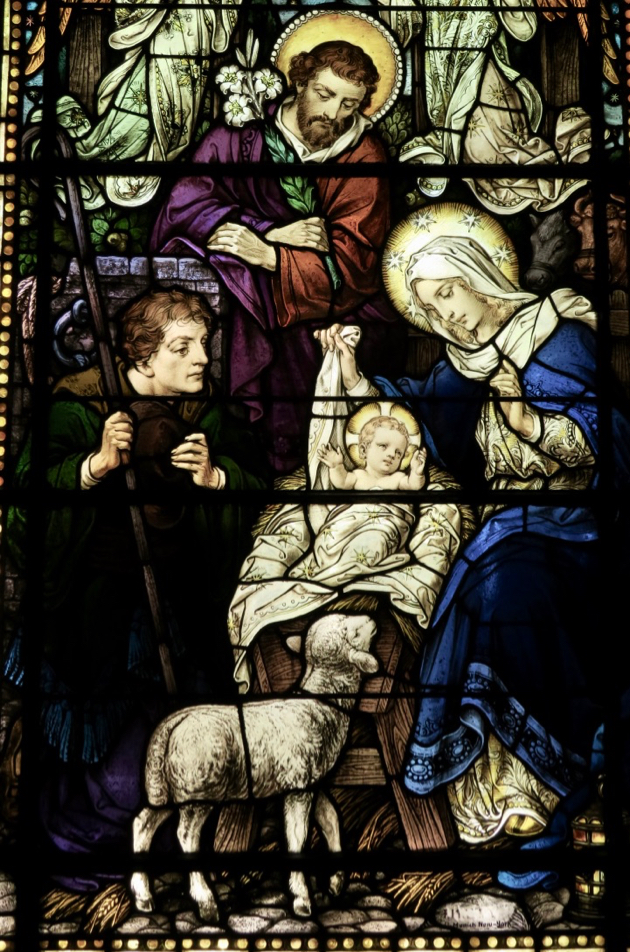
Window in the church of St. Mary, Charleston S.C. (Mayer of Munich)
A blessed and holy Christmas to all our members and readers!
22
Dec
21
Dec
Dear Friends and Supporters,
We have some exciting news to communicate to you for the coming year.
We have just finalized our plans for our Third Annual Lepanto conference, which will take place on February 15.
We are very honored to announce that Cardinal Joseph Zen, the courageous retired bishop of Hong Kong, has accepted our invitation. We will also welcome Professor Michael Foley and Fr. George Rutler. Given the tense and tragic situation in Hong Kong, we cannot be certain that the Cardinal will be able to make this long trip. But we hope and pray that we will be able to greet him in New York!
Like last year’s Lepanto Conference, we plan a Solemn Pontifical Mass with a beautiful choral setting.
Our full schedule will be forthcoming shortly, but please mark the date, February 15. You will not want to miss this event.
There are many costs to putting on a conference of this scale, including airfares, lodging, transportation, facility fees. We must engage fine singers and musicians for the pontifical liturgy.
Can we count on your help to bring about this important event to New York?
Our Lepanto Conferences have been a huge success. Many people in attendance have experienced the beauty of the Traditional Mass for the first time.
We know of a priest who went back to his parish in New Jersey to start his own weekly traditional Mass after witnessing it for the first time at our conference.
Most of you are following our documentation–in word and picture–of the many Catholic Traditionalist events in the greater New York area. In addition to our blog at sthughofcluny.org, we have a popular Facebook page, Instagram and Twitter (yes, we have one!). The traffic on our sites seems to be ever increasing–demonstrating the growing interest in the Traditional Mass it is our mission to promote.
We sponsored a busy schedule of events this past year. Complete ceremonial, appropriate vestments and beautiful music were integral parts of every liturgy celebrated.
- Our successful annual Lepanto Conference at St. Vincent Ferrer Church. Over 700 attended the pontifical liturgy, over 300 attended the conference that followed.
- An address by Prof. Peter Kwasniewski at St. Mary’s, Norwalk;
- A Sung Requiem Mass at Most Holy Family Church in New York for the repose of the soul of Msgr. Ignacio Barreiro. The pastor, Fr. Gerald Murray, gave the homily.
- In July, a Solemn High Mass for the feast of St. Ann at Immaculate Conception Church in New York.
- In September, a Solemn Mass at Most Precious Blood Church in Little Italy for the Feast of San Gennaro
- In October a Solemn High Mass at St. Catherine of Siena Church in New York on the occasion of the canonization of Cardinal Newman.
- On December 5th, a Solemn Mass for the Feast of St Nicholas at Most Holy Redeemer parish—the first traditional Mass in that parish since Vatican II.
In addition to these events that we ourselves organized, we co-sponsored the annual Requiem Mass at St. Vincent Ferrer parish in November.
We will sponsor the music for Christmas Midnight Mass in the Dominican Rite at St. Vincent Ferrer. And we will return to Most Holy Redeemer church on January 6 to co-sponsor a Solemn Mass! The schedule is indeed growing full.
We thank you for your support of all of these events. We turn to you once more to help us in this coming year to keep the traditional Catholic cause alive.
Please consider making a tax-deductible gift to the Society of St Hugh of Cluny today!
Donations can be made by PayPal. Go to the PayPal icon on our website: https://sthughofcluny.org
Checks may also be sent to the following address:
c/0 Stuart Chessman
2 Tamarack Place
Greenwich, CT 06831
In either case, tell us your address so we can send you an acknowledgement.
Wishing you a Blessed Christmas,
Stuart Chessman
The Society of St. Hugh of Cluny
Mosaic in the Martorana Church in Palermo, Sicily
Christmas
The following churches will offer the traditional Mass on Christmas. Please help us complete our schedule by notifying us of Masses that are not listed. We wish you and your family a blessed Christmas!
Connecticut
St. Mary Church, Norwalk, CT, Christmas Eve: 11:30 pm Christmas carols, 12:00 Solemn Midnight Mass with Mass in G major, K. 140 “Pastoral” (W. A. Mozart); Christmas Day: 9:30 am, Solemn Mass
St. Patrick Church (the Cathedral Parish) Bridgeport, CT, Christmas Day, 12:15 pm, High Mass.
Saints Cyril and Methodius Oratory, 12:00 am, Midnight High Mass; 8:30 am low Mass; 10:15 am high Mass.
St. Stanislaus Church, New Haven, Christmas Day, 2 pm, High Mass
St. Patrick’s Church, Waterbury, CT, 12:00 Midnight (beginning with carols at 11:30 pm), 8:30 am, 10:30 am.
St. Marguerite Bourgeoys, Brookfield, CT, 12:30 pm
St. Martha Church, Enfield, CT, 12 Midnight; 11 am.
New York
Church of St. Catherine of Siena, New York, NY, 12 Midnight, Missa Cantata, with Haydn’s Missa Cellensis in C Major with orchestra.
Church of the Holy Innocents, New York, NY, 12:00 Midnight, Solemn Midnight Mass; 1:30 am, Low Mass at Dawn; 9 am Low Mass; 10:30 am, Solemn Mass followed by Benediction.
St. Agnes Church, New York, NY, 9 am
Our Lady of Mount Carmel, New York, NY, Christmas Eve, 11 pm Church opens for confessions, carols and Holy Rosary, 12:00 am, Solemn Midnight Mass; 1:30 am, Second Mass at Dawn; 10:30 am, Missa Cantata.
Our Lady of Refuge, Bronx, NY, Sung Midnight Mass.
St. Josaphat Church, Bayside (Queens), NY, 11 pm Christmas carols, 12 am High Mass, 9:30 am, High Mass.
Immaculate Conception Church, Sleepy Hollow, NY, 1:30 pm, Missa Cantata (please note earlier time)
St. Paul the Apostle Church, Yonkers, NY, 6 am.
Annunciation Church, Yonkers (Crestwood), NY, Christmas Day: 9 am and 1:30 pm, Father Benedict Andersen OSB celebrant. (Masses during the Christmas season: 6:45 am on Dec. 26 & 27; 9 am on Sat. Dec. 28; 11:15 am on Sun. Dec. 29; 6:45 on Dec. 30 & 31; 9 am on Jan. 1 & 2.)
St. Patrick’s Church, Newburgh, NY, 3 pm
St. Matthew Cburch, Dix Hills, NY (Long Island), Christmas Day 12:30 pm in the Parish Center Chapel
St. Rosalie Church, East Quoque, NY (Long Island), Christmas Day 12:45 pm.
Sacred Heart Church, Albany, NY, 12 am Solemn Midnight Mass
St. Joseph Church, Troy, NY, 12 noon.
New Jersey
Annunciation All Saints Church, Jersey City, NJ, 11:30 pm, Christmas Carols, 12:00 am, Midnight Mass featuring Missa Solemnis in C major KV 337 by W.A. Mozart
St. Anthony of Padua Oratory, West Orange, NJ, Christmas Eve: 10 pm confessions, 10:30 Christmas carols, 11:00 pm Solemn Midnight Mass; Christmas Day: 7:30 am, 9 am, 11:00 am.
Our Lady of Fatima Chapel, Pequannock, NJ, Christmas Eve: 11 am carols, 12:00 am Midnight Mass; Christmas Day, 7 am, 9 am, 11 am.
Our Lady of Victories, Harrington Park, NJ, Christmas Eve, 9 pm.
Shrine Chapel of the Blessed Sacrament, Raritan, NJ, 11 am
St. Catherine Laboure, Middletown, NJ, 8:45 am Missa Cantata.
Corpus Christi Church, South River, NJ, 12:00 am, Sung Midnight Mass
St. John the Baptist Church, Allentown, NJ, 12:oo am Solemn Midnight Mass. Dr. Jennifer Donelson-Nowicka conducting the Schola Cantorum of St. John the Baptist, Peter Carter, organist.
January 1
Wednesday, January 1, the Circumcision of Our Lord, the Octave of Christmas, is a Holy Day of Obligation. The following church will offer the traditional Mass.
Connecticut
St. Mary Church, Norwalk, CT, 9:30 am Solemn Mass.
St. Patrick Church (the Cathedral Parish) Bridgeport, CT, 12:15 pm, High Mass.
St. Francis Church, New Britain, CT, 5 pm
New York
Church of the Holy Innocents, New York, NY, New Year’s Eve: 11:30 pm, High Mass; New Years Day, 9 am, Low Mass; 10:30 am High Mass
St. Agnes Church, New York, NY, 10:30 am
Annunciation Church, Yonkers (Crestwood), NY, 9 am
Immaculate Conception Church, Sleepy Hollow, NY, 3 pm
Holy Trinity Church, Poughkeepsie, NY, 6 pm, Solemn Mass.
20
Dec
Contact us
Register
- Registration is easy: send an e-mail to contact@sthughofcluny.org.
In addition to your e-mail address, you
may include your mailing addresss
and telephone number. We will add you
to the Society's contact list.
Search
Categories
- 2011 Conference on Summorum Pontifcum (5)
- Book Reviews (95)
- Catholic Traditionalism in the United States (24)
- Chartres pIlgrimage (17)
- Essays (176)
- Events (667)
- Film Review (7)
- Making all Things New (44)
- Martin Mosebach (34)
- Masses (1,336)
- Mr. Screwtape (46)
- Obituaries (14)
- On the Trail of the Holy Roman Empire (22)
- Photos (346)
- Pilgrimage Summorum Pontificum 2021 (7)
- Pilgrimage Summorum Pontificum 2022 (6)
- Pilgrimage Summorum Pontificum 2023 (4)
- Sermons (79)
- St. Mary's Holy Week 2019 (10)
- St. Mary's Holy Week 2022 (7)
- St. Mary's Holy Week 2023 (7)
- St. Mary's Holy Week 2024 (6)
- Summorum Pontificum Pilgrimage 2024 (2)
- The Churches of New York (197)
- Traditionis Custodes (47)
- Uncategorized (1,366)
- Website Highlights (15)
Churches of New York
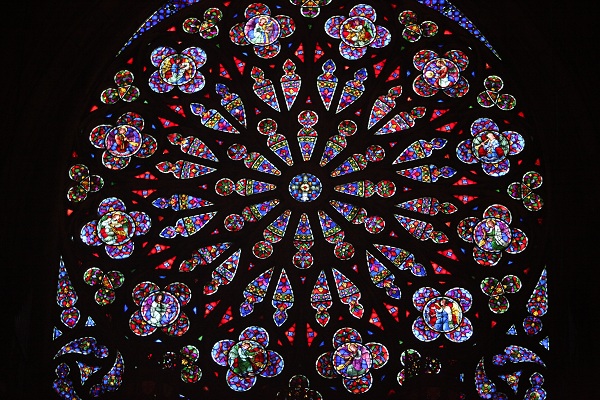
Holy Roman Empire
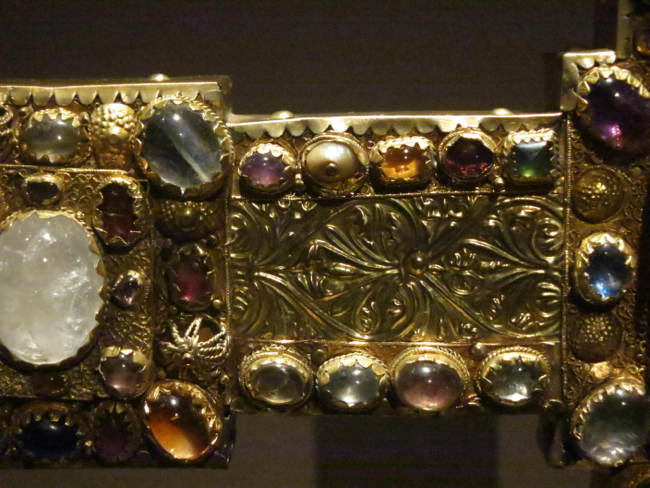
Website Highlights
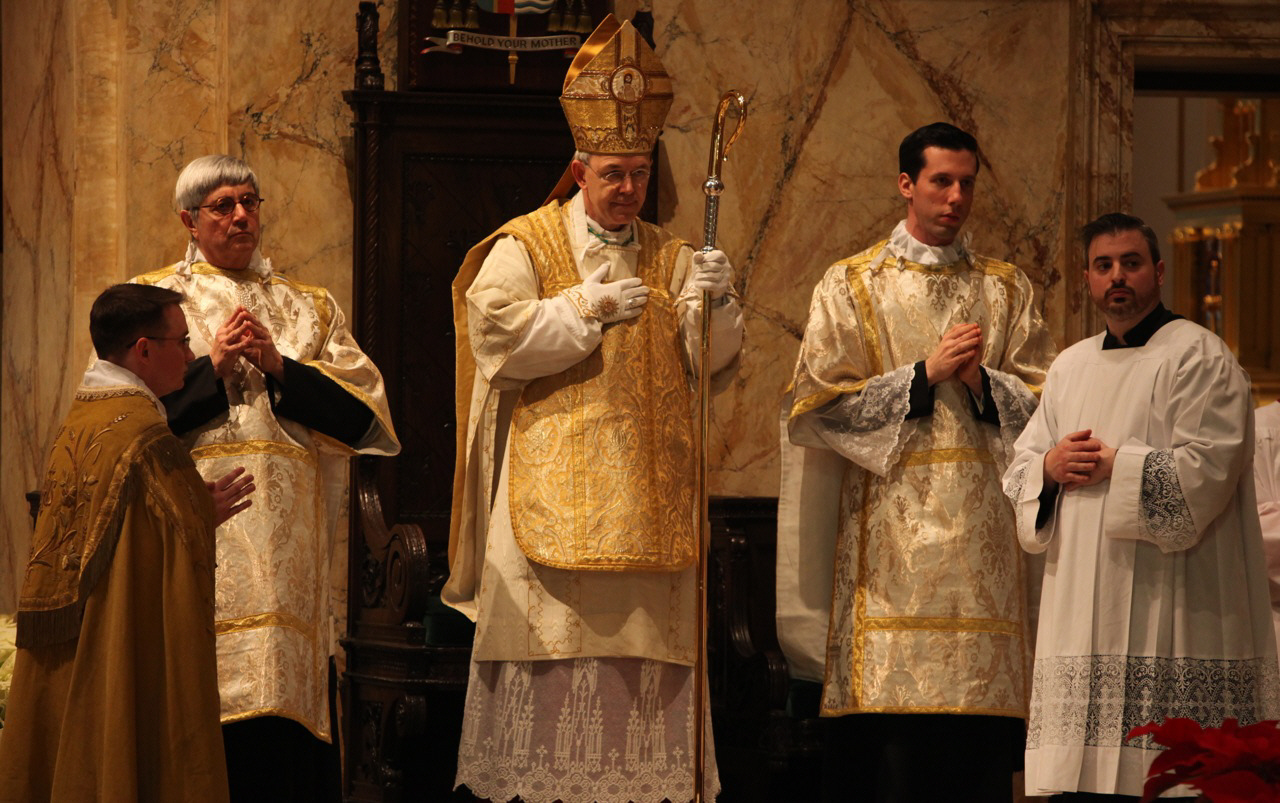
Archives
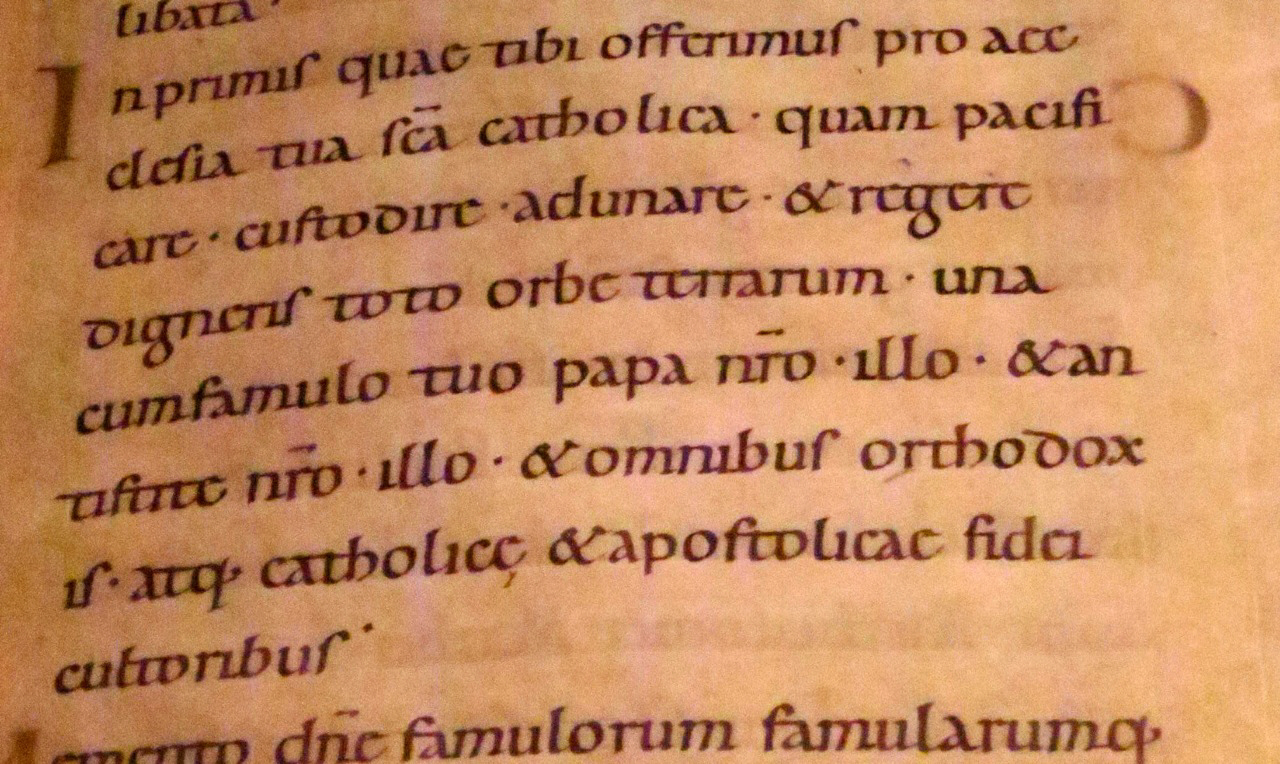
Links
- Canons Regular of St. John Cantius
- Holy Innocents
- O L of Fatima Chapel
- St. Anthony of Padua
- St. Anthony of Padua (Jersey City)
- St. Gregory Society
- St. John Cantius Church
- St. Mary Church, Norwalk
- The Remnant
- Una Voce Hartford
- Una Voce Westchester
[powr-hit-counter label="2775648"]
